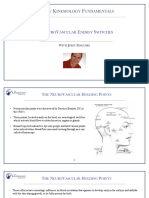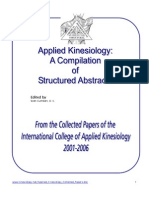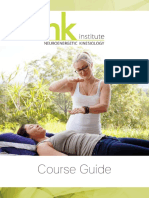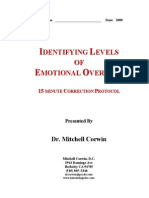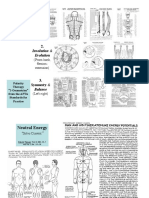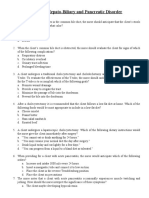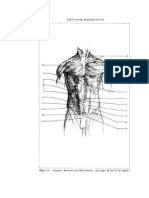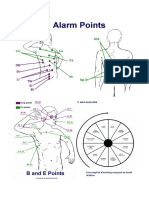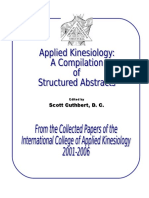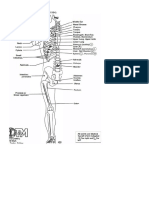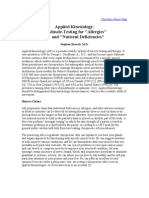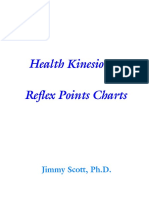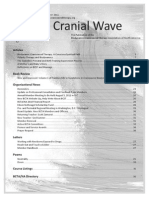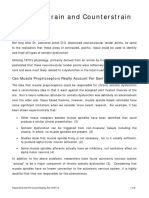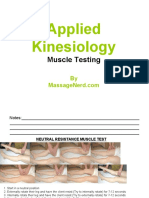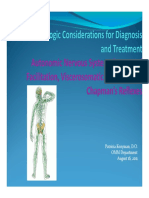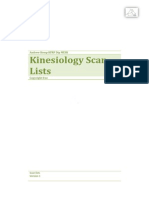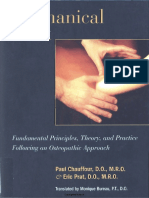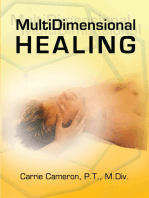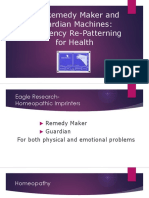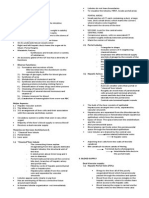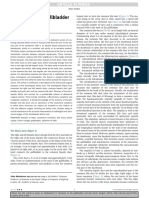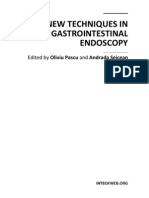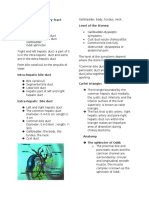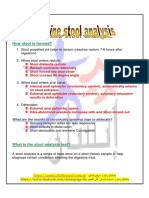Temporal Sphenoidal Line: T4 Gall Bladder
Temporal Sphenoidal Line: T4 Gall Bladder
Uploaded by
taichi7Copyright:
Available Formats
Temporal Sphenoidal Line: T4 Gall Bladder
Temporal Sphenoidal Line: T4 Gall Bladder
Uploaded by
taichi7Copyright
Available Formats
Share this document
Did you find this document useful?
Is this content inappropriate?
Copyright:
Available Formats
Temporal Sphenoidal Line: T4 Gall Bladder
Temporal Sphenoidal Line: T4 Gall Bladder
Uploaded by
taichi7Copyright:
Available Formats
S
O
T
O
A
U
S
T
R
A
L
A
S
I
A
S P R I N G 2 0 1 0
E X P R E S S I O N
I N S I D E T H I S
I S S U E :
E D I T O R :
SamanthaCulley
BUDDINA,SUNSHINECOAST
0754443499
s.culley@hotmail.com
A D V E R T I S I N G :
QtrPage $165.00
Halfpage $275.00
1Page $495.00
A4trifoldinsert $165.00
Free
Classifiedadvertisingformembers!
D4 REFLEXGALL BLADDER
1, 4, 5
P R E S I D E N T S R E P O R T 2
T H E E D I T O R S P E N 3
2 0 1 0 E V E N T S C A L E N D A R 3
E X C E R P T S F R O M 6
D E J A R N E T T E ( A S T H MA )
C L A S S I F I E D S 8
D 4 R E F L E X G A L L B L A D D E R
Welcome to this edition of the newsletters article on the
thoracic four reflex work involving the gall bladder, common
bile duct and ampulla of vater. The bloodless surgery proce-
dures in this paper are the observations of Dr. De Jarnette
and his colleague, Dr. Mel Rees who developed the tempo-
ral sphenoidal reflex areas you see on your S.O.T. wall chart.
In clinical practice with a D4 reflex, CMRT and TS patient
there are nine areas of pain reflex. Dr. Rees marked these
with a skin pencil for pre and post comparison. In point
form, these markings are:
1. The pain warning sign of bile system problems that
brings in more patients than any other is knee pains.
You will isolate the reflex pain to a small area on the
medial inferior of both knees which is the bile duct
sphincter of Oddi reflex. Mark these ouch areas with a
skin pencil.
2. Mark the temporal sphenoidal T4 that is most painful. This will be the headache area that so
many of these patients will present. This will extend to the superciliary arch then over the
head to the occipital, commonly on the right hand side.
3. A common patient complaint will be pain areas on the right shoulder girdle. With a skin pen-
cil mark the painful shoulder areas. These are on the right scapula as lateral painful nodules
and on the top of the right shoulder meaning common bile duct abnormalities.
4. You will be surprised at how many patients will show you a pain
area just above the right elbow on the inside of the arm which is
the reflex area for the intestine area where the common bile
duct empties. Mark this with a skin pencil.
5. Mark the painful to palpation third cervical transverse, com-
monly on the right hand side. This will be one of your contacts.
6. Mark the right hand web nodule which will be painful in gall blad-
der abnormalities.
7. Mark the right foot gall bladder area.
8. Mark the ampulla of vater reflex master area which occurs one and a half
inches to the right of the umbilicus then three quarters of an inch down. In
metric, this is roughly 40 millimetres to the right and twenty millimetres down.
In some publications, a misprint gave this reflex point as three inches down
rather than three quarters of an inch down, so please note this.
9. Mark the centre of the sternum painful area. This will be your final pre-
ganglionic area and is a region you have encountered previously in this series
of articles.
There are several other areas that De Jarnette recommended you should note and
test for before you begin your gall bladder and bile system CMRT work, including:
a) If the gall bladder is acutely inflamed, when you squeeze the right thumb index finger web
there will be noted contraction of the abdominal muscles.
b) If the gall bladder is acutely inflamed when you squeeze the right foot gall bladder reflex area
you will cause abdominal muscle contractions. This foot reflex area is usually more promi-
nent than the finger thumb web reflex.
c) If these two reflex areas are tender but no abdominal reaction is elicited then you have a
chronic gall bladder disorder to contend with.
Here is a real dilemma for you to experience. You palpate and test these areas and suggest to the
(Continued on page 4)
D 4 R E F L E X G A L L B L A D D E R (CONT.)
patient that they have a gall bladder problem. They say this cant be
possible as they have had their gall bladder removed some years previ-
ously. Here is what has occurred. Because the surgery was done under
anaesthesia, the brain did not fully record this and is not aware that
the gall bladder has been removed and thinks the gall bladder is still
there and in trouble. Part of your CMRT work is to handle this neuro-
logical confusion. It is a bit like the organ equivalent of phantom limb
syndrome, in which a person loses a leg but still feels a need to scratch
a perceived itch or feels pain or par aesthesia in that limb.
A patient can exhibit any one or all of the following symptoms of gall
bladder and bile system abnormality.
1. The lower G.I. tract distended by gas.
2. Gastro enteric distress.
3. Gastric vertigo.
4. Pain over lateral scapula.
5. Right shoulder girdle pains.
6. Knee pains.
7. A right frontal sphenoidal headache.
8. Nausea.
9. Irregular bowel action.
10. Bowel movement yellowish and with an oily appearance.
11. Jaundiced whites of eyes.
12. Nervous to extremes.
13. Pain between xiphoid and umbilical.
14. A tension over McBurneys point.
15. Occipital pull described by the patient as headache in back of
head.
In the procedure for the T4 reflex patient you are dealing with bile sta-
sis. You are endeavouring to do the following seven things:
1. Anaesthetise the very painful common bile duct so you can work
in that area.
2. Relax the sphincter of Oddi.
3. Relax the spastic common bile duct.
4. Relax and empty an inflamed impeded gall bladder or convince
the brain that a surgically removed gall bladder is no trouble.
5. Drain the liver of impeded bile backup.
6. Adjust the occipital side slip which will be found.
7. After this has been completed you then remove the anaesthesia
with the preganglionic technique.
T4 Technique
Your patient is supine and you are seated to the patients right. All
reflex areas to be worked on have been marked with a skin pencil and
the following seven steps are then performed.
Step One: As soon as the patient is turned from the prone to the su-
pine the doctor applies TS pain control anaesthesia. The doctors left
hand finger contacts with light pressure the active TS T4 on skull. Doc-
tors right hand holds a light contact over the ampulla of vater abdomi-
nal reflex. This is a one to two minute hold being enough time to block
the pain receptors so that the following steps can be more readily per-
formed.
Step Two: Now move your left hand under the patient and contact the
T4 transverse process majorits held there under the patients body
weight. Your right hand begins at the soft tissue under the xiphoid and
works its way down to the ampulla of vater area, in sweeping circles.
This is to relax the common bile duct. If you have done your TS pain
control sufficiently, this should be well tolerated by the patient.
In earlier times, thus in the development of CMRT when it was still
termed bloodless surgery, this step was known as post-ganglionic
clearing or neutralisation of the postganglionic exciter. Simply, you are
clearing out the pain-causing signals that the viscera are sending to
the brain. Now, with the spasmodic calibre narrowing visceral reflex
neutralised you can proceed to drain the bile ducts and the gall blad-
der.
Step Three: Now you must relax the gall bladder and use palpatory
pressure so that it will empty its contents. If there has been gall blad-
der surgery this will relax the stub by clearing lace adhesions and thus
convincing the brain that the gall bladder area is normal. If the right
hand web reflex is more painful than the foot gall bladder reflex, then
you contact the marked nodule in the web between your left hand in-
dex finger and thumb with a squeezing pressure. Your right flat hand is
placed over the bile duct area with the fingers over the gall bladder just
under the liver. The rest of the flat hand will be over the bile duct and
ampulla of vater. This hand contact presses floorward and then head-
wards as the left hand contact uses rotary moves over the web nodula-
tion. Do this for one minute or until you feel the gurgling sensation as
relaxation occurs.
Step Four: If the foot reflex is more painful than the thumb web, then
the foot contact is used for this step. The right foot area where you
find this gall bladder reflex is just to the inside of the colon hepatic
flexure reflex foot area. Flex the patients right knee and bring his right
foot up to rest over his left knee so you can readily reach the reflex.
Use a right hand double finger reinforced contact to the foot reflex as
your left hand contacts over the ampulla of vater. No vigorously ma-
nipulate the marked foot contact as the bile duct soft tissue contact is
pushed floorward and then headward up under the liver. Repeat this
for one minute or until you feel the gall bladder bile duct areas relax.
Step Five: This is the third cervical contact. The third cervical on the
right hand side is contacted with left thumb anterior, fingers to the
posterior. The right hand contacts those tissues to the right and infe-
rior of the umbilicus. You lightly stimulate the cervical while lower
hand moved floorward then headward. You continue until you hear
and feel the gall bladder, common bile duct and intestines move with a
gurgling sound. If gall bladder surgery has been performed you will still
get the gurgling sound. Remember with this step you are normalising
gall bladder to brain reflexes. It is telling the brain that the gall bladder
which isnt there but should be is returning to normal function as you
proceed with this technique.
Step Six: This is now a pump out and emptying technique. You reach
under the patient with your left hand and make firm contact with the
painful dural port area at the fourth dorsal. The right hand vigorously
carries the bile duct tissues up under the liver and rib cage to the right
and then to the left as headward pressure is maintained.
If the gall bladder is still intact it will discharge its contents. If surgical
removal has been the case, it will produce ease in perception of the
gall bladder troubled reflex.
Step Seven: You only use this step when you are certain that all the
bile duct reflexes are normal. In practise you would have 5 or 6 visits
before adding this, the pre-ganglionic step. A good suggestion is to go
to the CMRT 1966 step of De Jarnettes, thus, the postganglionic. De
Jarnette used the holding contact over the right shoulder and mildly
stimulated two areas in postganglionic procedure, the rib or duct area
and secondly, the ampulla area, we have already worked on. The pre-
ganglionic has these same contacts, duct and ampulla, but whereas
the postganglionic is a soothing hold contact for the spinal accessory
nerve, the preganglionic involves contacting that central sternal exciter
area (after visit five); found at the sternum at the mid nipple line.
This area is painful to touch and you tell the patient so. You then per-
form 10 vigorous circles as the other hand is on the duct reflex area
and then 10 vigorous circles as the other hand is on the ampulla area.
(Continued from page 1)
(Continued on page 5)
E X P R E S S I O N
Page 4
E X P R E S S I O N Page 5
Effectively, you are putting a force into the nervous system to stimulate a previously troubled viscous, either inflamed or chronically sluggish
into activity.
As with all of the articles in this series, the information is there to flesh out your CMRT procedure that you have learned in your basic series
and which you have read about in the definitive work, De Jarnettes CMRT Manual, 1966. This volume and the charts you will need are avail-
able from Averil at SOTO Australasia headquarters. As well, dont forget that wonderful resource, the Rose Ertler memorial library, which is
maintained by Dr. Rozeboom and has generously been made available to SOTO Australasia members. Bye for now.
John S. Kyneur Peter J. Kyneur
Haberfield, Toronto
Sydney, NSW Newcastle, NSW
(Continued from page 4)
The 2010 S.O.T. Certification Examinations are scheduled to take place to co-
incide with the SOTO Australasias Annual Convention and AGM. Examinations
will be conducted in both theory and practical for Basic SOT Certification, Ad-
vanced Certification and SOT Certified Craniopath. Reserve your place by call-
ing Averil.
A guidelines handbook that is available to download from our website, has all
the information as well as a registration form.
Some of last years successful candidates have been part of the educating
team at this years Seminar Series. Their help and enthusiasm has been well
appreciated by both Primary and Table Educators as well as the participants.
To be eligible to sit the Basic and Advanced Certification examinations a candi-
date must have completed the SOT Seminar Series at least twice, be a finan-
cial member of SOTOA, be a registered chiropractor and have had at least 1
year of practising as a chiropractor. To be eligible to sit for SOT Certified Cra-
niopath a candidate must have completed 140 hours post graduate SOT Semi-
nars or SOTO International sponsored programs( equals 4 Basic Seminar Se-
ries), be a financial member of SOFOA & a registered chiropractor.
Diplomate status is available to a practicing SOT Certified Craniopath who has
submitted a written thesis for consideration by the Board of Directors.
Fellowship status is achieved following Diplomate status by having a research
paper published in a peer-reviewed journal.
S . O . T . C E R T I F I C A T I O N E X A MI N A T I O N S 1 2 N O V E MB E R , 2 0 1 0
Pathways To Excellence
SOT Basic Certification
SOT Advanced Certification
SOT Certified Craniopath
Diplomate
Fellowship
A S T H MA B Y D E J A R N E T T E
Asthma is reaching epidemic levels. So I thought I would do a word
search in De Jarnette Craniopathy. In just one book, the 1982 Cra-
niopathic Instructors Manual, I found the following. I copied the para-
graph where asthma is found. Imagine if this were done for all of the
SOT- Craniopathic manuals.
David Rozeboom
Start of reproduction.
The following are cranial procedures not indicated by categories:
The Cranial Bowl Lift.
The Cranial Rhythm Impulse Technique (C. R. I.). Respiratory
Temporal Rocker Technique (R. T. R. T.).
Temporal Reciprocating Technique (T. R.T. ).
TMJ Malocclusions
Deafness.
Ventricular Compression Bulb Technique.
The Sphenobasilar
Symphysis Technique.
Sphenobasilar Asthma Technique.
Sphenobasilar Occipitofrontal Approach Technique.
Craniosacral Approach To Sphenobasilar.
Spheno-Basilar Flexion And Extension Technique.
Cough Test To Determine Flexion Or Extension Of The Sacral Base.
Sacral Pussy Footing Craniosacral.
Inhalation Exhalation Sacral Balance Technique.
C.S. F. Balance Technique.
Mastoid C. S. F. Balance Technique.
Inhalation Faults Technique.
Accelerator Bulb Technique.
C.S. F. Control Technique.
Sutherland's Uncle Tom Sacral Pussy Footing.
Asthma Cruciate ,
Technique. Eustachian Tube Technique.
Epilepsy Technique
Directing The C. S. F.
The Cranial Antidote Technique.
Cranial Membrane Flexion And Extension Technique.
The Frontal Fruit Jar Technique.
Craniofacial Lift.
Coronal Suture Technique.
Frontal Headache Technique. Continued on page 6
You might also like
- Cloacals: The Most Important Kinesiology Correction of All!Document7 pagesCloacals: The Most Important Kinesiology Correction of All!Marinejet90% (10)
- Allergen KitList 1109Document10 pagesAllergen KitList 1109taichi7100% (1)
- Neurovascular Holding PointsDocument8 pagesNeurovascular Holding PointsAlexandru Baciu100% (4)
- Chapmans ReflexesDocument10 pagesChapmans ReflexesNickosteo100% (9)
- 10 Acupuncture Shortcuts For KinesiologistsDocument2 pages10 Acupuncture Shortcuts For Kinesiologiststaichi7100% (10)
- 10 Acupuncture Shortcuts For KinesiologistsDocument2 pages10 Acupuncture Shortcuts For Kinesiologiststaichi7100% (10)
- Eye Modes For Specialised KinesiologyDocument1 pageEye Modes For Specialised KinesiologyMarkus van der Westhuizen100% (3)
- Relationship Between Chapman's Reflexes and Acupuncture Meridians by Traditional Chinese Medicine Practitioners in TaiwanDocument22 pagesRelationship Between Chapman's Reflexes and Acupuncture Meridians by Traditional Chinese Medicine Practitioners in TaiwanFrederic Dubois100% (2)
- Acupuncture Made EasyDocument5 pagesAcupuncture Made Easytaichi7No ratings yet
- Melting Bone, Healing Tide: How to Reanimate Inertial Bone Tissue Through Therapeutic TouchFrom EverandMelting Bone, Healing Tide: How to Reanimate Inertial Bone Tissue Through Therapeutic TouchRating: 5 out of 5 stars5/5 (1)
- The Origins of Neural Organization TechniqueDocument134 pagesThe Origins of Neural Organization TechniqueCarmen LlerenasNo ratings yet
- Neurolymphatic Points Chapmans ReflexesDocument15 pagesNeurolymphatic Points Chapmans Reflexestaichi7100% (15)
- Chapter 2 KinesiologyAcupressureDocument28 pagesChapter 2 KinesiologyAcupressureJ100% (4)
- AK Lab Manual For Fwinter 2019Document192 pagesAK Lab Manual For Fwinter 2019luckyNo ratings yet
- Applied Kinesiology Collected Papers 2001-2006Document124 pagesApplied Kinesiology Collected Papers 2001-2006Huib Salomons80% (10)
- Chapman's Reflexes and Modern Clinical Applications - Lecture - William H. Devine, DODocument94 pagesChapman's Reflexes and Modern Clinical Applications - Lecture - William H. Devine, DOHermann92% (13)
- NK Course Guide enDocument52 pagesNK Course Guide enIgnacioNo ratings yet
- Patricia Kooyman, D.O. OMM Department August 16, 2011Document40 pagesPatricia Kooyman, D.O. OMM Department August 16, 2011iahmed3000100% (37)
- Neuro LymphDocument18 pagesNeuro Lymphwolfgangl70100% (13)
- Direct Release Myofascial TechniqueDocument196 pagesDirect Release Myofascial Techniqueyplian100% (5)
- Polarity TherapyDocument22 pagesPolarity TherapyChris Walker100% (10)
- Neurolymphatic Points Chapmans ReflexesDocument15 pagesNeurolymphatic Points Chapmans Reflexestaichi7100% (15)
- Hepatobiliary ExamDocument15 pagesHepatobiliary ExamEms Rio Bal0% (1)
- Energetic Kinesiology24Document1 pageEnergetic Kinesiology24Marius Dan GiolgauNo ratings yet
- 58 Soft-Tissue Manipulation: Figure 2aDocument4 pages58 Soft-Tissue Manipulation: Figure 2ataichi7100% (1)
- Published Applied Kinesiology TextsDocument10 pagesPublished Applied Kinesiology TextsVíctor Muñoz López100% (1)
- From Applied Kinesiology Synopsis by David WaltherDocument2 pagesFrom Applied Kinesiology Synopsis by David WaltherVíctor Muñoz López100% (2)
- Applied Kinesiology Collected PapersDocument88 pagesApplied Kinesiology Collected PapersLopez Alejandro100% (1)
- The Physiology of Muscle MonitoringDocument12 pagesThe Physiology of Muscle MonitoringJalil CabañasNo ratings yet
- Advanced Kinesiology FinalDocument97 pagesAdvanced Kinesiology FinalTnum100% (3)
- Chapman's Reflexes PointsDocument10 pagesChapman's Reflexes Pointscatalin100% (1)
- International College of Applied Kinesiology USA (PDFDrive)Document241 pagesInternational College of Applied Kinesiology USA (PDFDrive)dvenumohan100% (5)
- Applied KinesiologyDocument8 pagesApplied KinesiologyBryan M. Voracek50% (6)
- Health Kinesiology Reflex Point ChartsDocument36 pagesHealth Kinesiology Reflex Point Chartssinhah100% (4)
- Muscle TestingDocument4 pagesMuscle TestingDaniela Stranieri100% (9)
- CranialWave Summer 2011Document36 pagesCranialWave Summer 2011Daniela100% (1)
- Fascial Strain Counter Strain 2013Document8 pagesFascial Strain Counter Strain 2013Rui Pedro Pereira100% (1)
- Raphael Rettner - Nerve Tract TechniqueDocument33 pagesRaphael Rettner - Nerve Tract TechniqueYuldash100% (3)
- 2006 TOUCH FOR HEALTH Annual Meeting ReporDocument80 pages2006 TOUCH FOR HEALTH Annual Meeting Reporlectavares100% (2)
- AK - Shortcuts - 2 - Manual - Online - CourseDocument62 pagesAK - Shortcuts - 2 - Manual - Online - Courseandrey.brenerNo ratings yet
- AK BookstoreDocument48 pagesAK BookstoreRukaphuongNo ratings yet
- Jean-Pierre Barral and Alain Croibier (Auth.) - Manual Therapy For The Cranial Nerves (2009)Document271 pagesJean-Pierre Barral and Alain Croibier (Auth.) - Manual Therapy For The Cranial Nerves (2009)Bruno Gonçalves100% (4)
- Lymphatic Aspects of Osteopathic Medicine - Peter Adler-Michaelson, D.O. (USA) - Presentation, 79 PagesDocument79 pagesLymphatic Aspects of Osteopathic Medicine - Peter Adler-Michaelson, D.O. (USA) - Presentation, 79 PagesYuldash100% (3)
- CV4 EfectDocument21 pagesCV4 EfectNicole HermosillaNo ratings yet
- A Manual of Acupuncture - Applied Kinesiology IsraelDocument0 pagesA Manual of Acupuncture - Applied Kinesiology Israelinej65100% (7)
- Chapmans Reflex 457Document8 pagesChapmans Reflex 457Huram-abiNo ratings yet
- Chapmans Reflex 479Document5 pagesChapmans Reflex 479Huram-abi0% (1)
- Osteopathic MedicineDocument10 pagesOsteopathic Medicinekleod100% (1)
- Applied Kinesiology: Muscle TestingDocument14 pagesApplied Kinesiology: Muscle TestingLyudmila Danova100% (3)
- NeuroVascular (NV) Holding PointsDocument2 pagesNeuroVascular (NV) Holding PointsHatem Farouk100% (4)
- Sacro Occipital TechnicDocument86 pagesSacro Occipital TechnicDaniele Oliveira100% (1)
- Chapman S Points PDFDocument40 pagesChapman S Points PDFPiqueta100% (1)
- Goering AAO Convocation2012LectureDocument110 pagesGoering AAO Convocation2012Lectureperrolobo73No ratings yet
- Muscle Testing 1Document39 pagesMuscle Testing 1Rana MubashirNo ratings yet
- Raphael Rettner - Releasing Birth TraumaDocument46 pagesRaphael Rettner - Releasing Birth TraumaYuldash100% (3)
- PDF - Scan ListsDocument19 pagesPDF - Scan ListsZoraida GutierrezNo ratings yet
- Neurolymphatic Reflex Massage Points: Blackheath Natural HealthDocument1 pageNeurolymphatic Reflex Massage Points: Blackheath Natural Healthlectavares100% (1)
- Spring Cranial WaveDocument44 pagesSpring Cranial Wavethetamuse100% (1)
- Chauffour - Mechanical Link - Fundamental Principles Theory and Practice Following An Osteopathic ApproachDocument197 pagesChauffour - Mechanical Link - Fundamental Principles Theory and Practice Following An Osteopathic ApproachMarta Serra Estopà100% (1)
- Releasing Cranial/Dural Strains, Eliminating the Mystique: A Simple, Concise, New TechniqueFrom EverandReleasing Cranial/Dural Strains, Eliminating the Mystique: A Simple, Concise, New TechniqueRating: 5 out of 5 stars5/5 (1)
- Journey to Healing: The Art and Science of Applied KinesiologyFrom EverandJourney to Healing: The Art and Science of Applied KinesiologyNo ratings yet
- Guardian Remedy MakerDocument63 pagesGuardian Remedy Makertaichi7No ratings yet
- Both Sides Now: Am I Just Dumb or What? Why Do Others Learn More Easily Than Me?Document20 pagesBoth Sides Now: Am I Just Dumb or What? Why Do Others Learn More Easily Than Me?taichi7100% (2)
- Temporal Sphenoidal Line T2Document3 pagesTemporal Sphenoidal Line T2taichi7100% (1)
- Alarm PointsDocument2 pagesAlarm PointsAngel MalzoneNo ratings yet
- Stress and Its Effects On Health and DiseaseDocument3 pagesStress and Its Effects On Health and Diseasetaichi7100% (3)
- Dr. RECKEWEGDocument73 pagesDr. RECKEWEGtaichi775% (4)
- The Twelve Salts and Some of Their Keynote SymptomsDocument2 pagesThe Twelve Salts and Some of Their Keynote Symptomstaichi7No ratings yet
- Sankaran S Table of Misams and RemediesDocument1 pageSankaran S Table of Misams and Remediesbtalif100% (2)
- Table of Miasms and RemediesDocument1 pageTable of Miasms and Remediestaichi7No ratings yet
- Gross Anatomy LiverDocument51 pagesGross Anatomy LiverDeny ShajiniNo ratings yet
- CholedocholithiasisDocument19 pagesCholedocholithiasisHarold Nathan TanNo ratings yet
- The LIVERDocument5 pagesThe LIVERJennica Monique Tiu CequinaNo ratings yet
- UntitledDocument10 pagesUntitledKaram ImadNo ratings yet
- 51 Pancreatitis: AnatomyDocument68 pages51 Pancreatitis: AnatomyFairus ZabadiNo ratings yet
- Hepatobiliary SystemDocument35 pagesHepatobiliary Systemyoyo patoNo ratings yet
- Robbins Ch. 19 The Pancreas Review QuestionsDocument3 pagesRobbins Ch. 19 The Pancreas Review QuestionsPA2014100% (1)
- Gallblader AnatomyDocument5 pagesGallblader AnatomyAnonymous gYpFy0No ratings yet
- Surgery TacticsDocument154 pagesSurgery TacticsAiman Arifin50% (2)
- New Techniques in Gastrointestinal Endos PDFDocument322 pagesNew Techniques in Gastrointestinal Endos PDFGabriel Ionescu100% (2)
- A Case Study On Urinalysis and Body FluidsDocument17 pagesA Case Study On Urinalysis and Body Fluidsrakish16No ratings yet
- Temporal Sphenoidal Line: T4 Gall BladderDocument3 pagesTemporal Sphenoidal Line: T4 Gall Bladdertaichi7100% (1)
- Noäi Soi Medic: Endoscopic Techniques of Sphincterotomy and Removing Common Bile Duct StonesDocument34 pagesNoäi Soi Medic: Endoscopic Techniques of Sphincterotomy and Removing Common Bile Duct StonesGanesaNo ratings yet
- Neoplasms of The Biliary TractDocument186 pagesNeoplasms of The Biliary Tracthgr58patologiaNo ratings yet
- CH 24 SlidesDocument56 pagesCH 24 SlidesYash ChaturvediNo ratings yet
- 2 Acute CholecystitisDocument21 pages2 Acute CholecystitisEtteh MaryNo ratings yet
- Disease of The Biliary TractDocument7 pagesDisease of The Biliary TractMae DoctoleroNo ratings yet
- Stool AnalysisDocument39 pagesStool AnalysisKhmissiBénnadjiNo ratings yet


